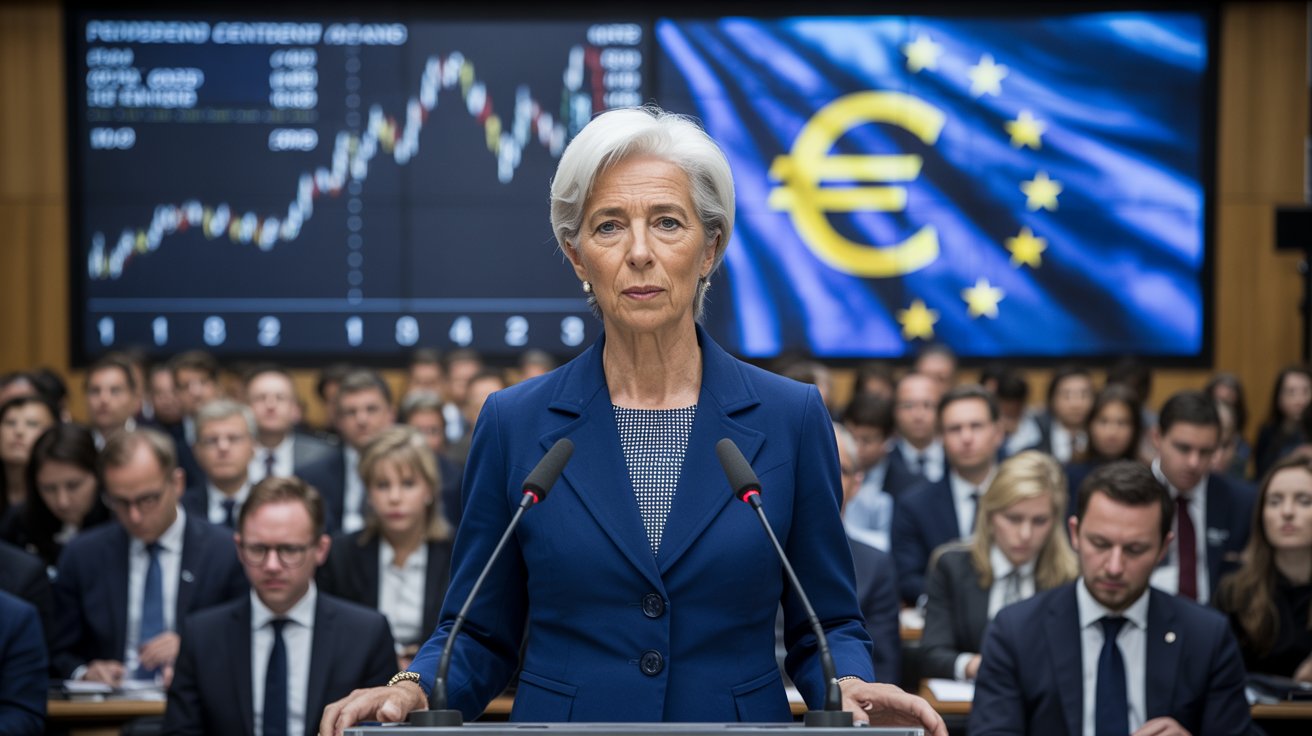
The euro is once again at the center of global financial discussions. Christine Lagarde, President of the European Central Bank (ECB), recently highlighted that Europe faces a “global euro moment,” an opportunity to strengthen the euro’s position as a leading global currency at a time when the U.S. dollar shows signs of weakness.
Yet, Lagarde’s message was far from celebratory. While the eurozone has a favorable window to expand its influence, she cautioned that deep-rooted political and structural challenges threaten to undermine this momentum. These include internal political divisions, resistance to issuing joint debt, and persistent delays in launching the digital euro.
For investors, businesses, and policymakers, this warning highlights both opportunities and risks surrounding the euro in 2025 and beyond.
The “Global Euro Moment” Explained
Christine Lagarde’s phrase “global euro moment” reflects her belief that geopolitical and economic shifts have created an environment in which the euro could gain global importance.
Key Factors Supporting the Euro’s Role:
- Dollar Weakness: The U.S. dollar, traditionally dominant, faces cyclical challenges, including fiscal deficits and policy uncertainty.
- Geopolitical Diversification: Countries and corporations are increasingly looking for alternatives to reduce dependence on the dollar, especially amid U.S.-China tensions.
- Eurozone Stability: Despite growth challenges, the eurozone maintains robust financial institutions and strong trade integration.
This moment, however, requires strategic reforms and political will to avoid slipping away.
Obstacles Hindering the Euro’s Rise
1. Internal Political Divisions
The eurozone comprises 20 member countries with varying fiscal policies, growth rates, and political agendas. Consensus is often difficult to achieve, especially when it involves deeper fiscal integration.
For example, northern European states often resist measures seen as “mutualizing” risk, while southern economies push for greater solidarity. These divisions weaken Europe’s ability to act decisively.
2. Resistance to Common Debt
One of the pillars of a truly global currency is a deep and unified bond market. The U.S. dollar benefits from the massive and liquid U.S. Treasury market. The eurozone, by contrast, remains fragmented.
- During the COVID-19 crisis, the EU issued joint debt for the first time under the NextGenerationEU recovery fund.
- But moving toward a permanent eurobond market faces strong political opposition. Without this, the euro cannot fully rival the dollar.
3. Delays in the Digital Euro
The ECB has been exploring a digital euro for years, but implementation has been slow. While China has advanced with its digital yuan and the U.S. debates a digital dollar, Europe risks falling behind.
A digital euro could:
- Strengthen the currency’s global use in trade and payments.
- Reduce dependence on external payment systems.
- Enhance financial inclusion and innovation.
Delays in decision-making risk undermining Europe’s ability to capitalize on this technological shift.
Christine Lagarde’s Message: Seize the Moment
Lagarde emphasized that opportunities don’t last forever. The eurozone must act decisively to:
- Enhance Capital Markets Union (CMU): Making it easier to raise funds across borders.
- Advance Banking Union: Strengthening integration of the banking sector.
- Launch the Digital Euro: To ensure Europe remains competitive in financial technology.
- Issue Common Debt Instruments: To rival U.S. Treasuries and create a truly unified European safe asset.
Risks Facing the Euro
1. Geopolitical Fragmentation
Europe must navigate a world where geopolitics increasingly shapes financial flows. Sanctions, U.S.-China competition, and conflicts such as the war in Ukraine put pressure on Europe’s financial autonomy.
2. Inflation and Monetary Policy Divergence
The ECB faces a delicate balance between controlling inflation and supporting growth. Divergences with the Federal Reserve’s policies could create volatility for the euro-dollar exchange rate.
3. Energy Dependency
Europe’s dependence on imported energy remains a structural weakness, despite advances in renewables. Energy shocks could weaken confidence in the euro.
Opportunities for Investors
1. Euro-Denominated Assets
If reforms advance, euro-denominated bonds could become more attractive as a safe haven.
2. Digital Euro Ecosystem
The eventual launch of a digital euro would create new opportunities for fintech firms, payment companies, and blockchain innovators.
3. Equities in Eurozone Exporters
A stronger euro could benefit firms reliant on imports, while exporters may face challenges. Investors must analyze sector impacts carefully.
4. Diversification from Dollar Assets
Institutional investors may increase allocations to euro assets as part of a broader de-dollarization trend.
Global Implications
For Emerging Markets
A stronger euro provides an alternative reserve currency for central banks in emerging economies, potentially reducing dollar dominance.
For International Trade
If widely adopted, the euro could become more prominent in commodity pricing, trade financing, and cross-border payments.
For the U.S. Dollar
The dollar remains dominant, but sustained euro reforms could create a multi-currency world, shifting the balance of financial power.
Long-Term Outlook
The euro is at a crossroads:
- If reforms succeed, Europe could consolidate its role as a major financial power, with the euro standing alongside—or even challenging—the dollar.
- If reforms stall, the euro risks remaining a strong regional currency but falling short of true global leadership.
Lagarde’s warning serves as a reminder: opportunity must be matched with political will. Without bold action, the “global euro moment” could fade into another missed chance.
Conclusion
The euro’s global moment is here—but it is fragile. Christine Lagarde’s warning underlines the urgency of overcoming political divisions, accelerating the launch of the digital euro, and deepening financial integration.
For investors, this creates both opportunity and uncertainty. A stronger euro could reshape portfolios, diversify reserve assets, and influence global markets. But until reforms are enacted, risks remain high.
As 2025 unfolds, the fate of the euro will depend not only on markets but on Europe’s ability to act decisively in this historic window of opportunity.
euro risks 2025, Christine Lagarde euro, ECB euro warning, digital euro launch, euro vs dollar 2025, eurozone economy, common EU debt, euro political divisions, investing in euro assets, euro global role, euro currency forecast, ECB monetary policy, euro bonds 2025, euro dollar exchange rate, eurozone inflation, digital currency Europe, euro reserve currency, future of euro, eurozone integration, global euro moment